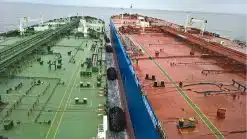Subtotal: €60,00
EPA Vessel General Permit (VGP)
€75,00 tax included
EPA Vessel General Permit (VGP) online course. The aim of this course is to get familiar with the contents and structure of the VGP, as well as the inspections, reporting, and record-keeping procedures required for effluent discharge and VGP compliance.

 STS Transfer Operation (TNK)
STS Transfer Operation (TNK) 










